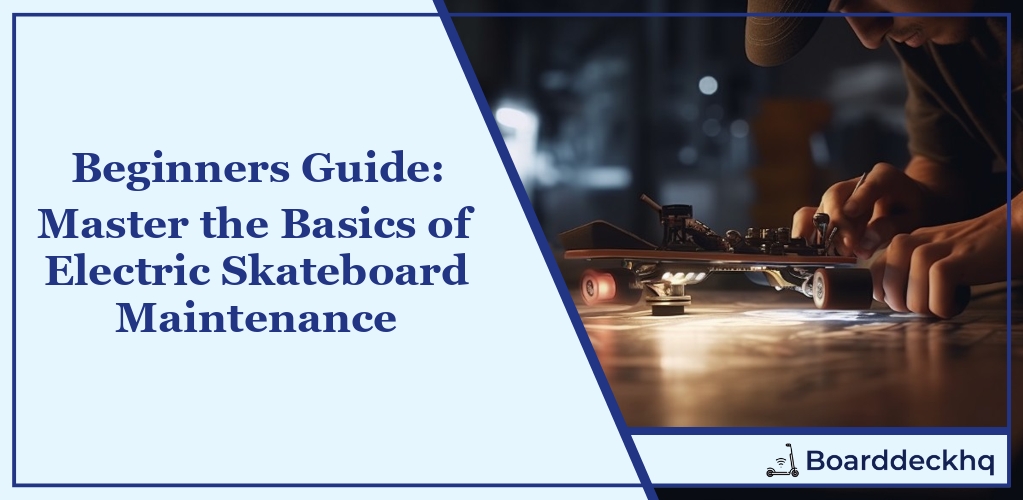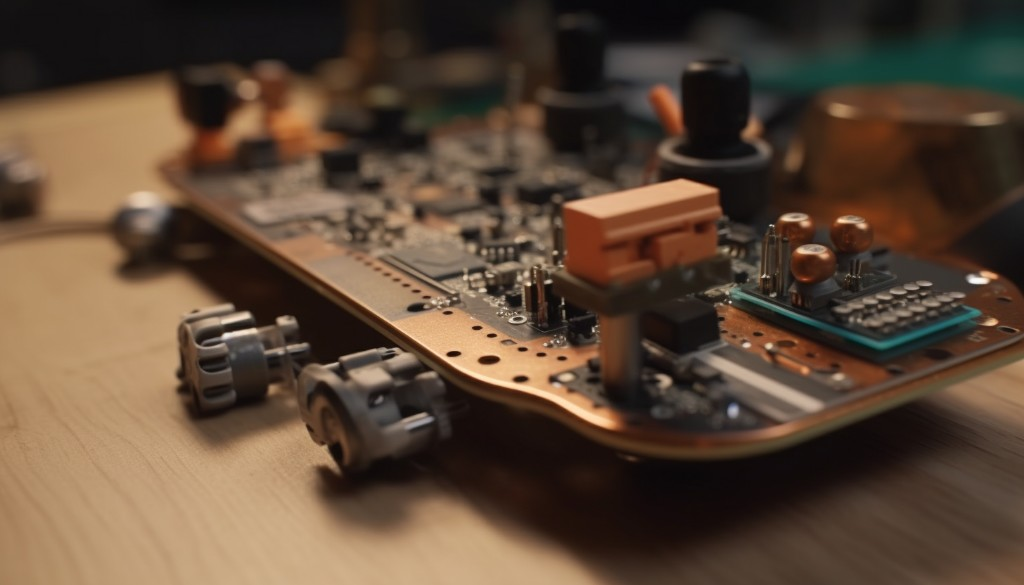Do you feel the adrenaline rush when you hop on your electric skateboard and glide through the streets, but dread the moment it starts to underperform? You’re not alone. This guide is here to help you keep that thrill alive by teaching you how to maintain your electric skateboard. We’ll delve into the intricacies of skateboard components, illustrate the significance of regular upkeep, and show you how to clean and optimize your ride for maximum performance. We’ll also share handy tips on maintaining the wheels and bearings, securing screws and nuts, and properly storing your skateboard. Furthermore, we’ll recommend essential tools and address commonly encountered problems. Lastly, we’ll highlight the benefits that proper maintenance brings to your electric skateboarding experience.
What we’ll cover:
- Electric Skateboard Components
- The Need for Regular Maintenance
- Tips for Cleaning
- Optimizing Battery Life
- Wheel and Bearing Maintenance
- Securing Screws and Nuts
- Proper Skateboard Storage
- Essential Maintenance Tools
- Solutions to Common Problems
Let’s dive straight into it, and show you why maintaining your electric skateboard can lead to unforgettable rides!
Understanding Electric Skateboard Components
To get started with the maintenance of your electric skateboard, it’s crucial to understand the parts that make up this thrilling device. The skateboard deck is the flat, long board that you stand on when riding. The grip tape is a rough, sandpaper-like material applied to the top of the skateboard deck to provide traction and control for your feet.
The electric skateboard bearings are small metal rings that fit inside the skateboard wheels, allowing them to spin smoothly on the skateboard trucks. The wheels on an electric skateboard are typically larger and softer than traditional skateboards to handle higher speeds and provide a smoother ride, while the skateboard trucks are the metal T-shaped pieces that attach the wheels to the deck.
Diving deeper into the electric skateboard components, you have the electric skateboard motor which propels the board forward. The skateboard bushings are soft urethane rings fitted into the skateboard trucks to allow for easy turning. Skateboard risers are optional rubber pads that go between the trucks and the deck to buffer against vibration and prevent wheel bite, a phenomenon when the wheel touches the deck during a sharp turn or slide.
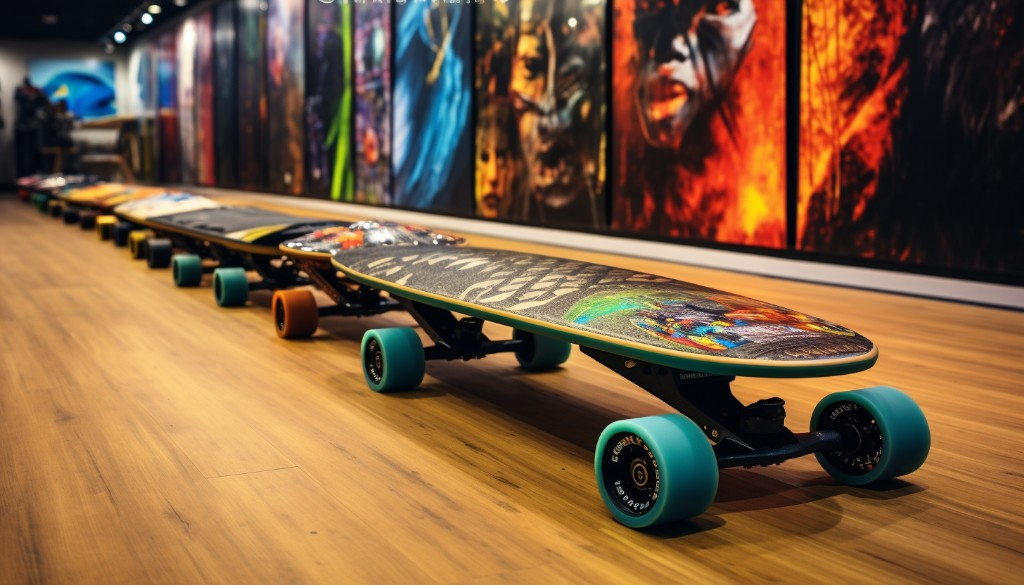
To complete the set-up, there are the skateboard hardware, including screws and bolts, to hold everything together. Lastly but importantly, the belt and gear transfer power from the motor to the wheels. This entire assembly of electric skateboard parts works in unison to create a great riding experience.
Importance of Regular Maintenance
Is it necessary to regularly maintain your electric skateboard? Absolutely! Regular maintenance is crucial for several reasons. Firstly, it protects your skateboard from wear and tear. Even with careful use, parts like wheels, bearings, and trucks can wear down over time. Regularly checking these parts can help identify any issues before they become serious problems.
Safety while riding your electric skateboard is another significant reason to maintain your board. Riding with worn down or damaged parts can lead to malfunctions and accidents. Regular maintenance ensures that your board is always safe to ride.
Let’s not forget ride quality. A well-maintained electric skateboard rides smoother and responds better than one that’s been ignored. Wear and tear can affect your board’s performance over time, leading to a sluggish ride. Regular maintenance ensures you always get the best possible ride quality from your skateboard.

Cleaning Your Electric Skateboard
Now that we understand why maintenance is important, let’s look at how to clean your electric skateboard properly. By regularly cleaning your electric skateboard, you can keep it looking good as new and prevent dirt or grime from affecting its performance.
To clean your skateboard deck grip tape, begin by lightly brushing it with a soft brush to remove loose dirt. Then use a damp or microfibre cloth to clean the surface gently.
After cleaning the grip tape, move on to the wheels and trucks. Use a damp or microfibre cloth to clean these parts carefully. Be sure not to oversaturate them as this could lead to rust or damage.
Finally, remember to give some TLC to your board’s hardware. Use a cloth to clean the skateboard deck and other hardware pieces thoroughly. This will remove any remaining dirt and help prevent corrosion.
It might seem like a chore but try cleaning after every ride if possible. This will help keep grime from building up and make each cleaning session simpler.
Remember, maintenance isn’t just about fixing things when they break. It’s about consistently taking care of your electric skateboard so it can continue to provide you with thrilling rides for years to come.
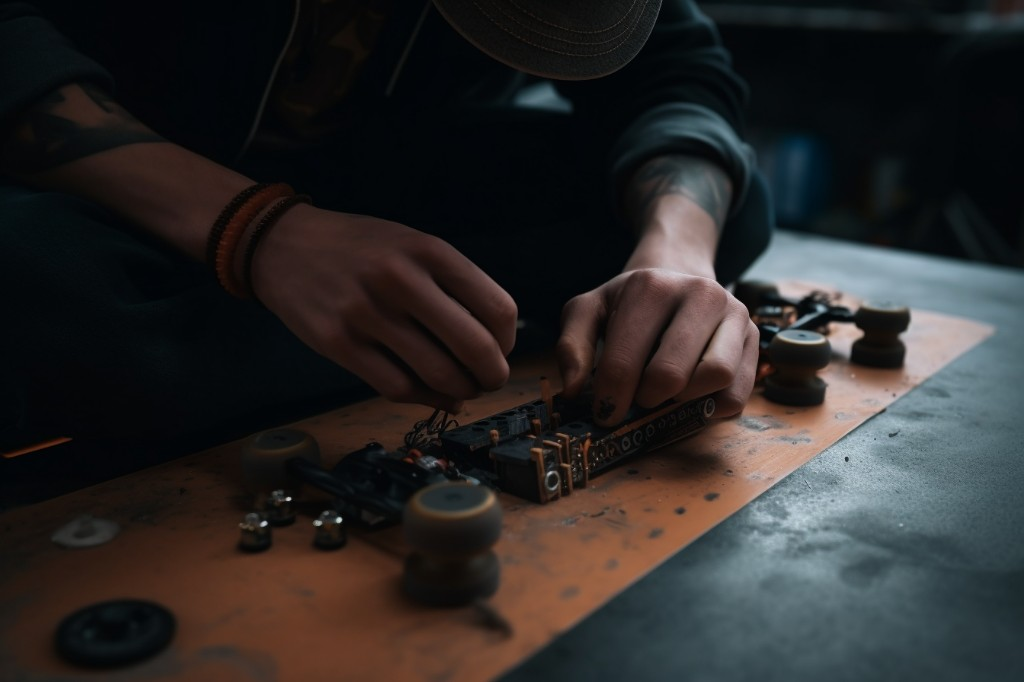
Optimizing Battery Life
Mastering the art of maintaining your electric skateboard battery can significantly enhance the performance and longevity of your electric skateboard. It’s crucial to understand how to prolong the life of the battery and prevent any damages.
One of the critical factors to consider is charging practices. Always use a dedicated battery charger designed specifically for your skateboard’s battery. This ensures that you charge the battery safely and efficiently, helping to maintain its ideal condition over a more extended period.
Another vital aspect is the impact of temperature on battery life. Extreme heat or cold can degrade a lithium-ion battery over time. Therefore, it’s advisable to store your electric skateboard in a place with a moderate temperature to help preserve its battery life.
Avoid overcharging the lithium-ion battery. Always unplug the battery charger once it’s fully charged. Overcharging can lead to battery degradation, reducing its overall lifespan. In short, ensure you follow the manufacturer’s guidance on how long to charge your electric skateboard.
Be sure to also check for any signs of swelling or leaks during your maintenance checks, as these can be signs of serious issues. Consult a professional if any defects are detected, as a damaged battery can be a fire hazard. Following these practices can significantly enhance your skateboard’s battery life and safety.
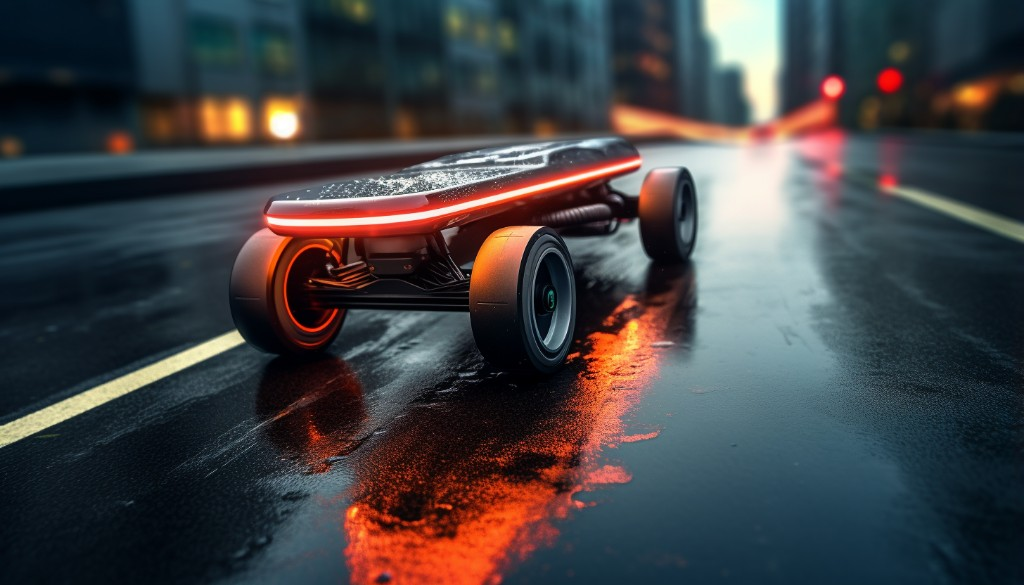
Maintaining the Wheels and Bearings
The wheel represents a crucial component of an electric skateboard that requires regular care and maintenance. One of the most effective ways to keep your wheels in top shape is by rotating them regularly. This helps ensure even wear, which can help prolong the wheel’s lifespan.
Bearings require regular cleaning to function optimally. Dirt and debris can accumulate within the bearing over time, which can affect their efficiency and performance. Therefore, it’s vital to clean the bearings periodically. You can do this by removing them from the wheels and using a dedicated bearing cleaning solvent.
After cleaning, it’s equally important to lubricate the bearings using a high-quality bearing lubricant. This reduces friction, allowing for smoother and faster rides. Maintaining your electric skateboard wheels and bearings regularly can significantly improve your electric skateboard’s performance and longevity.
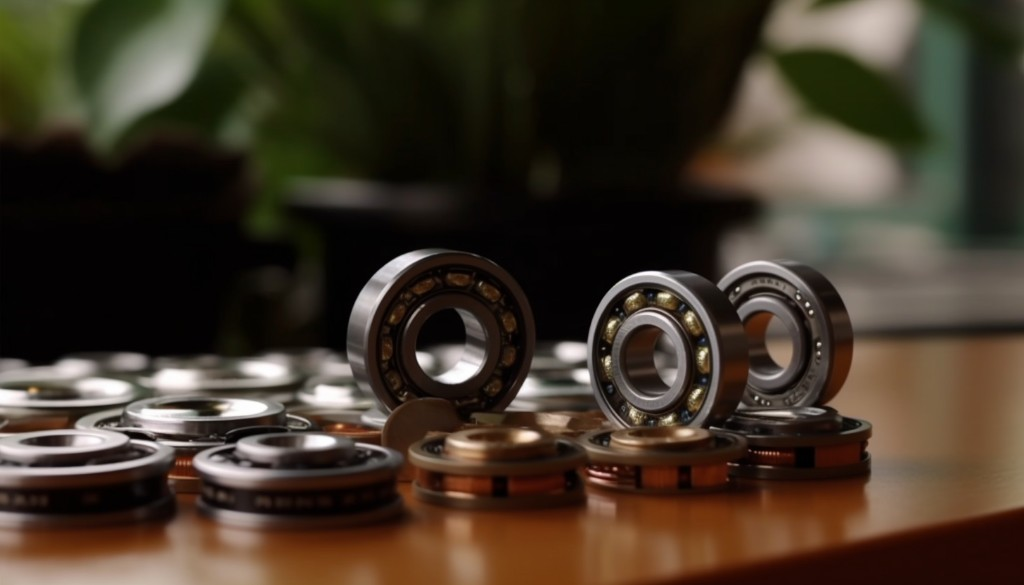
Secure Screws and Nuts
Ensuring all screws and nuts are secured properly is essential for maintaining the structural integrity of your electric skateboard. Regular use can cause screws and nuts to become loose over time, which could lead to unstable rides or even accidents.
It’s advisable to check screws and nuts regularly for any signs of loosening or wear. You can do this by using a screwdriver to gently test each screw and nut on your board. If you find any that are loose, use the screwdriver or appropriate tool to tighten them securely.
Remember, too tight can be just as problematic as too loose when it comes to screws and nuts on your skateboard. Over-tightened hardware such as these can cause undue stress on your skateboard’s components, leading to premature wear or damage. It’s about striking that perfect balance for optimal performance – secure, but not overly tight.
By regularly checking and adjusting your skateboard’s screws and nuts, you can ensure a safer, more enjoyable skateboarding experience, and prevent potential skateboarding accidents.
Proper Storage for Your Electric Skateboard
When it comes to maintaining your electric skateboard, knowing how to store it correctly is crucial. You must ensure that the storage location is suitable for the long-term health of your skateboard. Let’s dive into how to store it properly.
Location Matters
Just like you wouldn’t leave a electric skateboard in the rain or snow, an electric skateboard should be stored in a dry, clean environment free from moisture to prevent damage to the electrical components. A well-ventilated area like a garage or a dedicated storage space in your home would be an ideal location.
Considering the Temperature
Temperature impacts on components are often overlooked. Extreme temperatures, be it hot or cold, can have detrimental effects on the battery life and performance of your skateboard. Thus, it’s best to store it in a location with a stable, moderate temperature. Avoid leaving your longboard exposed to direct sunlight for prolonged periods as this can lead to overheating and degrade the battery faster.
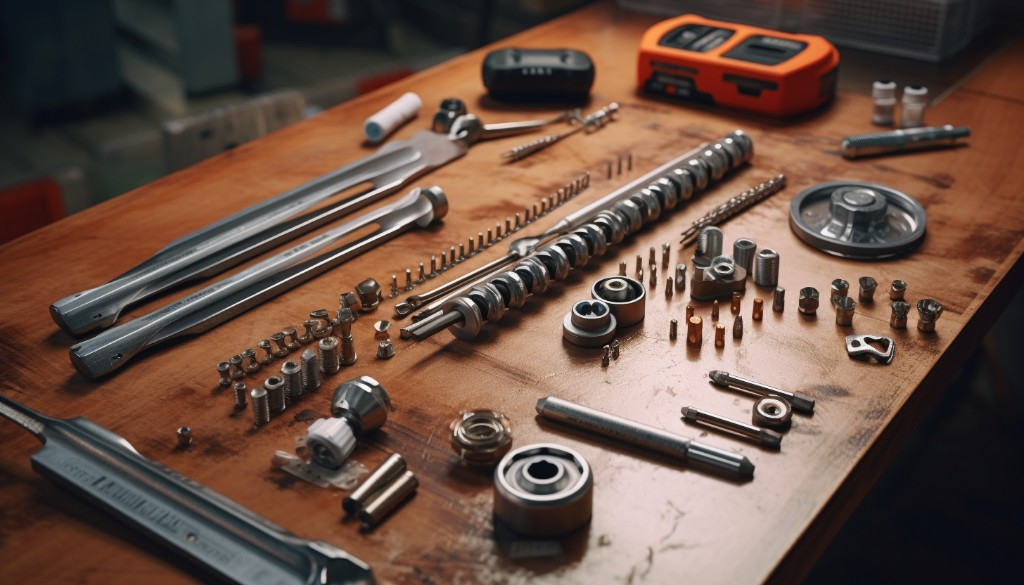
Recommended Tools for Maintenance
Now that you know how to store your skateboard properly, let’s go over some tools that are vital for maintaining your ride.
Skate Tool
A skate tool is arguably the most important tool you need. This three-pronged tool allows you to adjust the trucks, wheels, and hardware of your skateboard. It’s versatile and compact, making it an essential addition to your maintenance kit.
Screwdrivers and Wrenches
Keep a set of screwdrivers and wrenches handy for tightening or loosening various parts of your skateboard. A Phillips-head screwdriver is typically used to adjust the screws on the deck, while wrenches are useful for manipulating the nuts on the trucks or wheels.
Specialized Tools
Some parts of an electric skateboard may necessitate specialized tools. For instance, you might need a bearing puller to remove the bearings from the wheels or a motor pulley puller for the motor pulley. Depending on your skateboard model, these tools can prove invaluable when performing more complex maintenance tasks.
Commonly Encountered Problems and Solutions
Even with proper storage and maintenance, you may occasionally run into problems with your electric skateboard. Let’s discuss some common issues and their solutions.
Remote Connectivity Issues
One common issue electric skateboard users may encounter involves remote connectivity. If you’re having trouble connecting your remote to your skateboard, try resetting both devices. If that doesn’t work, check if the remote’s battery needs replacing. Failing that, contact the manufacturers for further guidance.
Squeaky Wheels
Squeaky wheels can be an annoyance, but this problem is typically easy to fix. Often, the squeaking is due to dirt or debris trapped in the wheel bearings. Cleaning them out regularly can prevent this issue.
Unresponsive Brakes
Unresponsive brakes are a serious safety concern. One possible cause might be a slack belt in the braking system. Try adjusting the tension on the belt or replacing it entirely if it’s worn out. Remember, when dealing with mechanical components like belts, regular inspection and maintenance can prevent many problems before they occur.
By understanding proper storage methods and having the right tools at your disposal, you can effectively tackle common electric skateboard problems. Regular maintenance and proactive problem-solving will ensure your ride continues to serve you well for years to come.
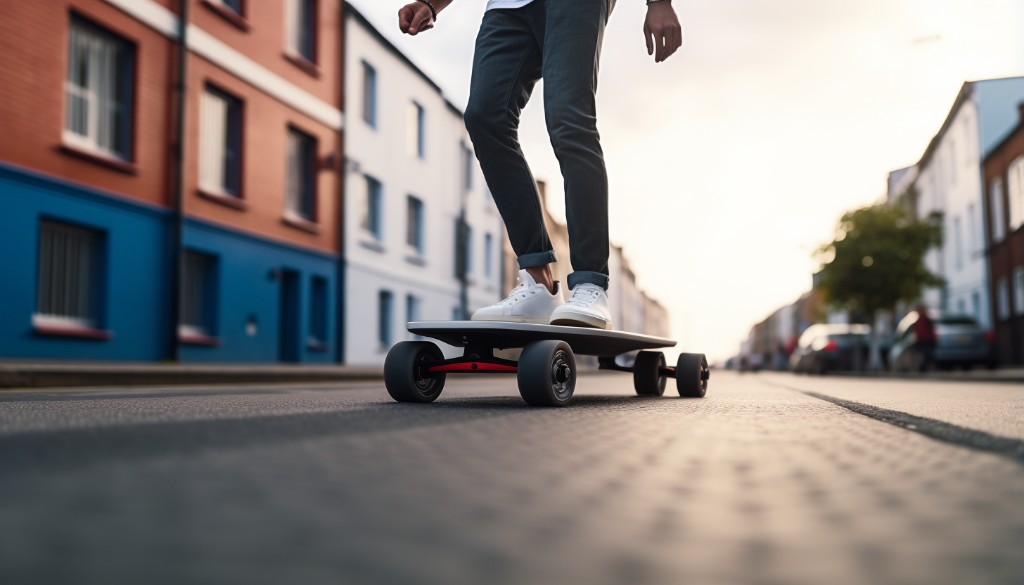
Closing Thoughts
Mastering the intricacies of electric skateboard components is a vital first step to ensuring excellent maintenance. Regular upkeep not only guarantees optimal performance but also extends the lifespan of the skateboard. From the heart of the board, the battery, to the wheels and bearings that carry you along city streets, each part demands special attention. Secure screws and nuts provide stability, and a clean board is a well-functioning board. Furthermore, proper storage can prolong the life of your E-Skateboard, making it crucial to find suitable conditions for your device.
Having the recommended set of tools at hand ensures you’re ready for any maintenance task or unexpected issues. As you face down those challenges, remember that common problems have known solutions, and addressing these issues promptly can prevent more severe complications. When all’s said and done, the benefits of proper electric skateboard maintenance are clear: improved performance, higher safety levels, and more mileage out of your favorite ride. So why not incorporate these maintenance basics for your E-Skateboards into your routine?
Frequently Asked Questions
How often should I clean my electric skateboard?
You should clean your electric skateboard after every ride to keep it in optimal condition. This routine cleaning involves removing dirt and debris from the wheels and board surface. For a more thorough cleaning, including bearings and trucks, aim for once a month or after riding in wet or dirty conditions.
What should I avoid when maintaining my electric skateboard?
When maintaining your electric skateboard, avoid using harsh chemicals or cleaning agents that can damage the board’s components. Also, you should never submerge your skateboard in water as it can harm the electronic elements.
Can I use any type of lubricant for my skateboard bearings?
No, it’s recommended to use a specific skateboard bearing lubricant. Other types of oils or lubricants can attract dust and debris, which can cause damage over time.
What tools do I need for electric skateboard maintenance?
For basic electric skateboard maintenance, you’ll need a variety of tools including a cleaning brush, skate tool for adjusting trucks, allen wrenches for removing hardware, and bearing lubricant. Some riders also keep spare parts like wheels and bearings on hand.
How do I know when it’s time to replace certain components?
Pay attention to changes in your skateboard’s performance. If you notice unusual sounds, decreased speed or power, or difficulty steering, it may be time to inspect and potentially replace some components. Regular maintenance can also help identify parts that are worn out or damaged before they cause problems.
